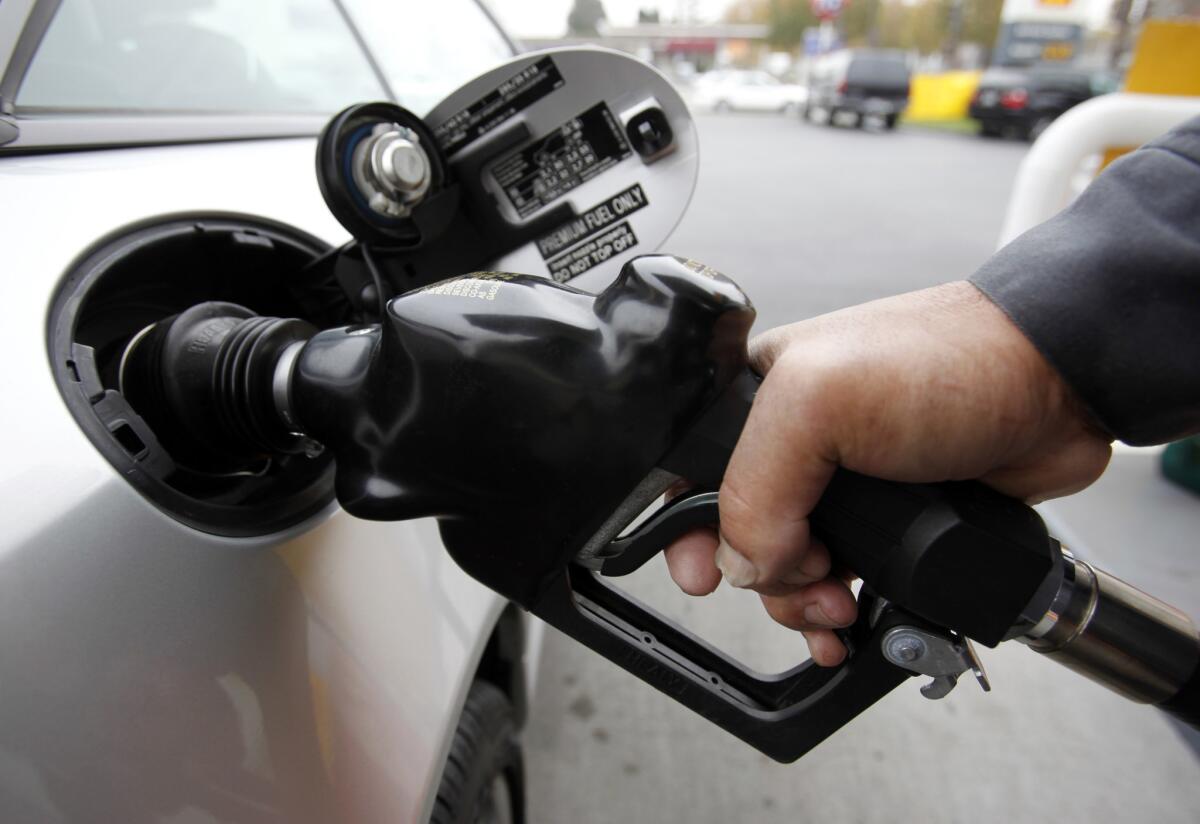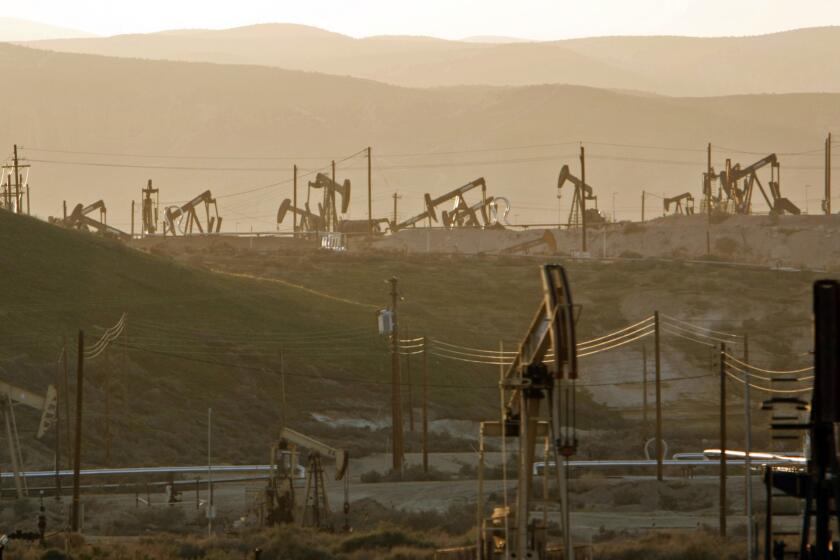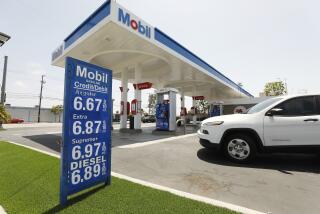Why do gasoline prices drop more slowly than oil prices?

- Share via
Two days after oil prices fell through the floor, there was not an immediate drop in prices at many gas stations in the Los Angeles area.
Fuel experts say it usually takes about six weeks for fluctuations in oil prices to work their way through the distribution system to the neighborhood gas pump.
But Patrick DeHaan, head of petroleum analysis at GasBuddy, said there’s another factor at work: Gas station owners are trying to hold on amid a perfect storm of too much supply and a crash in demand that has upended all conventional thinking in the fuel sector.
“All of this is unexpected, unprecedented, uncharacteristic,” DeHaan said.
Oil futures dived below zero for the first time ever amid the coronavirus-triggered economic turmoil.
The May futures contracts for domestic oil — West Texas Intermediate — dropped to negative $37.63 a barrel Monday, the first time in U.S. trading history that the price of oil fell below zero. A financially deadly combination of a global oversupply of crude and coronavirus-motivated stay-at-home restrictions that have kept millions of Americans off the roads created a mismatch between buyers and sellers because there is too much oil and not enough places to store it.
The bleeding continued Tuesday: May futures climbed back above zero, but the more widely held June WTI contracts dived more than 40% to $11.57 as traders remained rattled. On Wednesday, June contracts clawed back 19%, settling at $13.78 a barrel — still a very low price.
“U.S. oil storage is busting at the seams,” said Dec Mullarkey, managing director of investment strategy of SLC Management in Toronto.
Because gasoline is a product of oil, the price of the latter affects the price of the former. And although the price of gasoline in Los Angeles and across the country has recently declined — Wednesday’s average price for a gallon of regular in the L.A. area was $2.859, down about 12% from a month earlier, according to GasBuddy — it has not fallen as precipitously as oil, which was trading above $60 a barrel when the year started.
What gives?
DeHaan said he expects gas stations to continue to lower their prices, but with demand slashed, many owners are “passing on the decreases very, very slowly — slower than I’ve ever seen” because of the uncertainty over when the economy will return to some semblance of normalcy.
Because of the coronavirus-era rules keeping people in their homes and the global oil glut, demand for gasoline has plummeted, stifling the sales and cash flow of gas station owners.
“We know restaurants and bars are suffering, but so too are gasoline stations because 50% to 70% of their business just completely vaporized,” DeHaan said.
“I think gas stations are going at a snail’s pace because they don’t know when their volumes will return to normal,” DeHaan said. “And a penny earned today is a penny that they may have in the future that helps them stay afloat. Gas stations have never seen such a drop in demand, and they’re basically in survival mode.”
There’s long been a debate over whether customers get gouged during price swings, and finding answers often gets complicated.
First, the accusations are difficult to prove. And second, station owners operate on very thin margins even under normal conditions. Many owners make more of their money from selling items inside their stores than at the pump.
Big oil companies have largely exited the business of owning the gas stations that carry their signage because it was hard to make money on them. Twelve years ago, Exxon Mobil announced it was selling its 2,200 company-owned gas stations. The vast majority of gas stations are now independently operated.
Last fall, Gov. Gavin Newsom called on the California attorney general to look into what UC Berkeley professor Severin Borenstein has called the “mystery surcharge” at some gas stations. Borenstein says that since 2015, there’s a differential of 20 to 50 cents a gallon that California motorists have paid that cannot be accounted for after taxes and fees are taken out.
No word on whether the attorney general’s office will launch an investigation.
In the meantime, DeHaan says motorists should shop around because there’s such a wide range of prices from one station to another in the county.
While the average price for regular gas in the Los Angeles area was about $2.86 a gallon Wednesday, some stations were selling for as low as $2.27 while others posted prices of more than $3.
“If you’re not an educated consumer,” DeHaan said, “you’re going to spend a dollar a gallon or more than you have to.”
Nikolewski writes for the San Diego Union-Tribune. Times staff writer Emmanuel Morgan contributed to this report.
More to Read
Inside the business of entertainment
The Wide Shot brings you news, analysis and insights on everything from streaming wars to production — and what it all means for the future.
You may occasionally receive promotional content from the Los Angeles Times.












